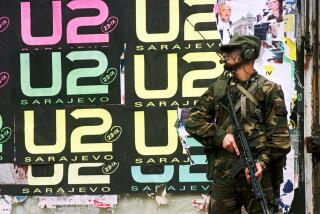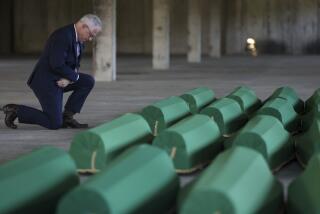It Looks So Familiar
- Share via
In 1990, 10 years after the death of Marshal Tito, the collection of Balkan states that the old Communist partisan had stitched together as Yugoslavia began to fray. The world came to know the collapse as the Bosnian crisis. But Bosnia-Herzegovina was not the tripwire of war. The trigger was the struggle between Croatia and Serbia, old enemies and the largest components of Tito’s Yugoslavia. In time, battles between the two peoples soaked the ground in places like Krajina and Eastern Slavonia.
Bosnia was caught in the middle, a volatile mix of Muslims, Croats and Serbs, and soon each ethnic community had taken up arms against the others. The Muslim-led Bosnian government in Sarajevo was left with shredded authority and little defense. Its constituents had become its enemies.
Now the fighting has given way to a peace imposed by Western arms and American diplomacy. And, as if this bloody chapter of Balkan history had never been opened, diplomats from Serbia and Croatia sat down in a hotel near Athens last week and tentatively agreed on mutual recognition of their independence. Forgive the Bosnians for wondering why they were the ones stuck on the track between these runaway trains.
The talk is now of peace and reconstruction. Elections for a new Bosnian government Sept. 14 will create a federation of a Croat/Muslim entity and a Serb entity, both under a central government in Sarajevo. Which is pretty much how things looked when the fighting began, except for the thousands of dead on all sides.
War crime issues remain, personal property must be sorted out. Ethnically divided towns like Mostar in Bosnia are still boiling. You can argue that this war should never have happened. But this is the Balkans.
More to Read
Sign up for Essential California
The most important California stories and recommendations in your inbox every morning.
You may occasionally receive promotional content from the Los Angeles Times.










